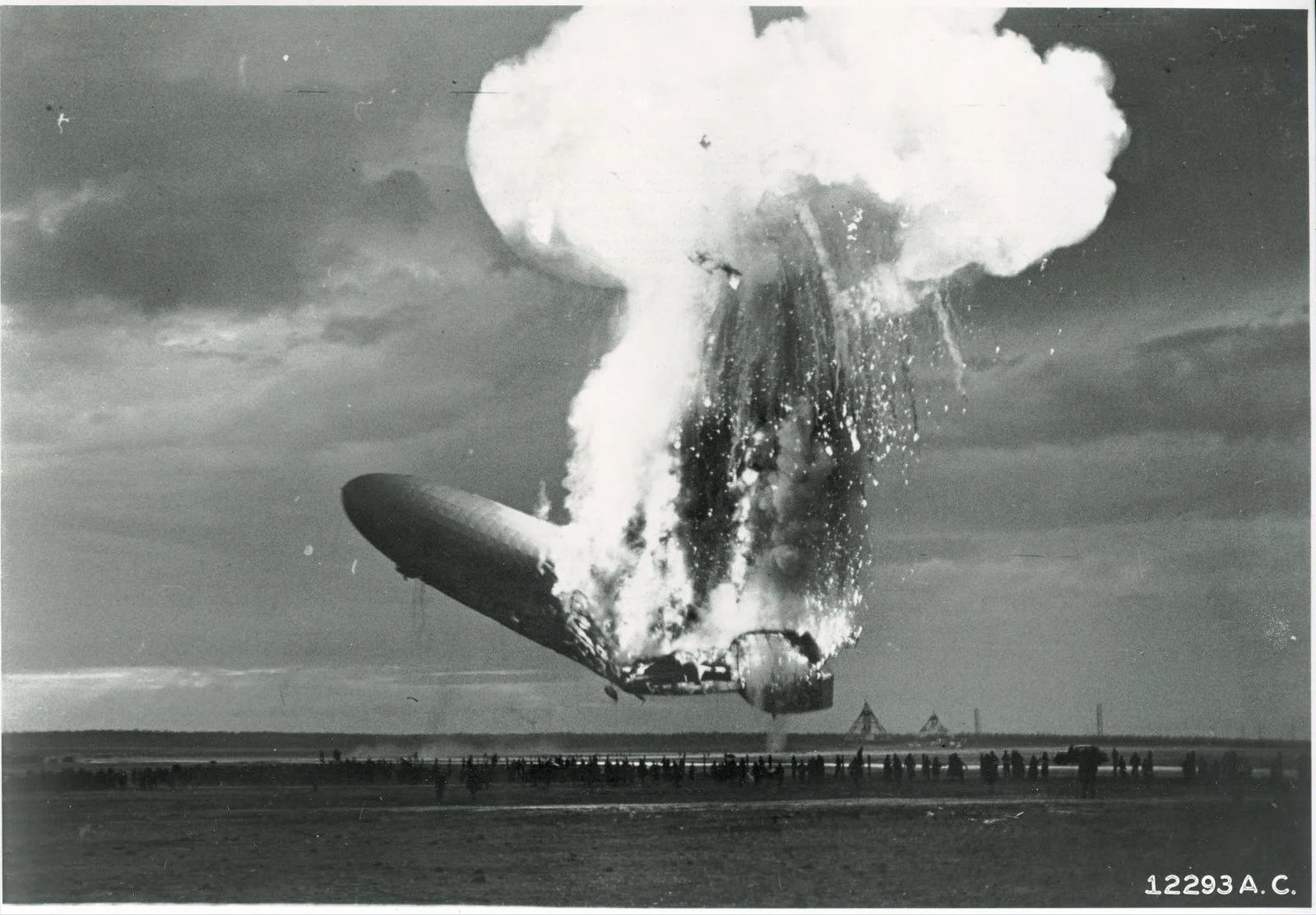The Hindenburg disaster of May 6, 1937, is one of aviation’s most tragic and enduring catastrophes. The German zeppelin, carrying ninety-seven passengers and crew, had been crossing the Atlantic when it suddenly caught fire and crashed to the ground, killing thirty-five people.
At the time, the Hindenburg was the largest airship ever built, measuring over eight hundred feet in length and almost one hundred and forty feet in height. It was constructed using a lightweight metal frame covered in cotton fabric panels and coated with a flammable material intended to make it waterproof.
The journey had started in Frankfurt, Germany, before crossing the Atlantic and finally arriving at Lakehurst, New Jersey, where it was scheduled to dock. However, as the Hindenburg approached the landing site, it experienced unexpected difficulties, and within minutes, the airship burst into flames.
The cause of the disaster was never conclusively determined. Some suggested that the Hindenburg’s hydrogen gas cells, used to provide buoyancy, had leaked and ignited the flammable coating on the airship’s skin. Others surmised that a lightning strike had ignited the hydrogen or that a bomb had intentionally targeted the Zeppelin Company that manufactured the Hindenburg.
Regardless of its cause, the Hindenburg disaster had an enormous impact on the public consciousness, effectively ending the airship era. The Zeppelin Company had been seen as the future of passenger air travel, but the disaster clarified the inherent dangers of these massive, flammable vessels.
The tragedy of the Hindenburg disaster has continued to capture the imagination of people worldwide, and it has inspired numerous songs, movies, and books. Yet, despite the passage of time, it remains a powerful reminder of aviation’s unpredictability and inherent risks and the importance of prioritizing safety in all forms of air travel.

Leave a Reply